Two cameras takes two images of a wooden plank. The images have an overlap of the plank which I need to stitch together in a way that it looks natural and preferably seamless to the human eye for inspection purposes. The images are cropped to the same size and masked to remove the background and most of the non-overlapping areas but the plank can have a slight tilt on the conveyor belt.
Currently I'm using the normxcorr2 function on the general overlay area, following ideas from the Matlab totorial of the normxcorr2 function, to try and identify one of the images in the other and work out an overlay offset, following the tutorial. However, this fails quite often as the normxcorr2 functions returns a zero offset - resulting in a bad stitching:
c = normxcorr2(plank_part1,plank_part2);
Find peak in cross-correlation:
[ypeak, xpeak] = ind(c==max(c(:)));
Account for the padding that normxcorr2 adds:
yoffSet = ypeak-size(onion,1);
xoffSet = xpeak-size(onion,2);
[xoffSet,yoffSet]
ans =
0 0
It would seem normxcorr2 can not always find the correct overlay of the images, or any overlay at all(?), even though I try to make it easier by increasing the gray scale contrast by the function histeq. My guess is that the amount of "gray-ish" area from the sapwood overwhelms the distinct knots, which are the important parts to stitch propperly.


Does anyone know of a way to either increase the likelihood of this stitching process, maybe by some more preprocessing, or use any other matlab skills/functions to make this work better?
P.S I can not use anything but freely accessible scripts as this would probably become license/copyright issues for my project.
Thank you for your time in trying to help!